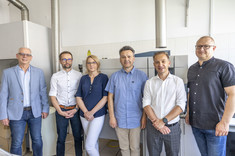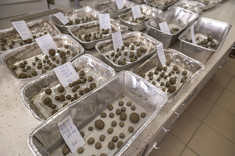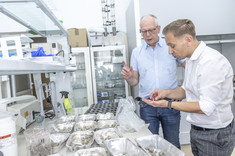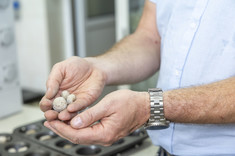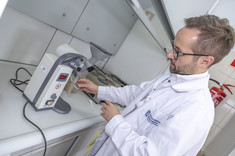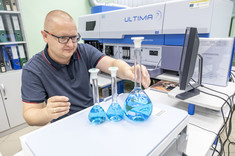Use of waste in environmentally-friendly aggregate production technologies Project description
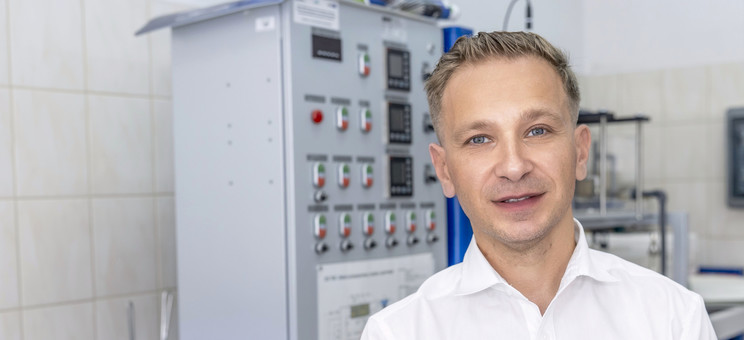
Project is performed within the VIA CARPATIA Polytechnic Network ointhe name of the President of the Republic of Poland Lech Kaczyński. The project manager is Adam Masłoń, BEng, PhD, DSc, Assoc. Prof. from the Department of Environmental and Chemistry Engineering at the Faculty of Civil and Environmental Engineering and Architectureof the Rzeszów University of Technology. The research project is carried out by a cooperation of three research groups: research team from the Białystok University of Technology, the Lublin University of Technology and the Rzeszów University of Technology. The project leader is the Lublin University of Technology.
Research team
Bialystok Technical University: Principal Investigator: Katarzyna Kalinowska-Wichrowska, BEng, PhD, , Research team members: Edyta Pawluczuk, BEng, PhD, Michał Bołtryk, BEng, PhD, DSc, ProfTit., Jakub Popławski, BEng, PhD, Natalia Stankiewicz, BEng, PhD, Ewelina Rudowska, BEng, MSc (doctoral student)
Lublin University of Technology: Principal Investigator: Małgorzata Franus, BEng, PhD, DSc, Assoc. Prof., Research team members: Danuta Barnat-Hunek, BEng, PhD, DSc, Assoc. Prof., Martyna Janek, BEng, MSc, Joanna Styczeń, BEng, MSc, Rafał Panek, PhD
Rzeszow University of Technology: Principal Investigator: Adam Masłoń, BEng, PhD, DSc, Assoc. Prof., Research team members: Renata Gruca-Rokosz, BEng, PhD, DSc, ProfTit., Maksymilian Cieśla, BEng, PhD, Lesław Bichajło, BEng, PhD, Andrzej Nowotnik, BEng, PhD, DSc, Assoc. Prof., Maciej Pytel, BEng, PhD
Project description
According to European directives aimed at preventing waste, one of the most important objectives is to achieve sustainability in waste management. However, the limited mineral resources available for extraction in the EU mean that increasing attention has recently been paid to the rational management of natural resources and the use of secondary raw materials. An area of industry that could benefit from a programme to support the development of new green technologies is the construction sector, and one effective and safe method of waste management could be to obtain sintered and autoclaved lightweight aggregates.
Among the waste generated is construction and demolition waste, with concrete rubble as the main component. This waste is becoming an increasing problem in many European countries and worldwide. Due to the dynamic growth of the construction industry, the amount of this waste will increase by 2050 and will account for up to 88% of all waste. It is therefore advisable to take action to solve the problem. Other waste to be managed are so-called bottom sediments resulting from the sedimentation of suspended solids in water bodies. Their accumulation causes a reduction in the capacity and depth of water systems, turbidity and water pollution, and has a negative impact on water quality. Excavated sediments should be managed so that they do not pose a threat to the environment and living organisms. The main problem with their usage is that they are often heavily contaminated with heavy metals and organic compounds. A very important waste for disposal are ash products. They are inert, but have the form of waste, as they may contain heavy metals. Therefore, they cannot be economically used.
Therefore, researchers from the Lublin University of Technology, the Bialystok University of Technology and the Rzeszów University of Technology have taken up the issue of converting selected waste into usable material as part of a closed-loop economy.
The primary aim of the project is therefore to develop a low-energy technology for producing lightweight construction aggregates from various wastes, including bottom sediments, fly ash from power generation and municipal waste incineration, and waste concrete rubble for use in construction, geotechnics or horticulture. Up to now, about 10-30% by weight of various types of waste in the raw material mass has usually been used for the production of lightweight aggregates. The remaining part was made up of natural geological raw materials (swelling clays). The innovation of the solution lies in the use of waste as a raw material. The method of sintering and autoclaving the three wastes and neutralising them in a single process will make it possible to obtain an ecological and full-value construction product with a wide range of applications. The development of a method for producing a new type of lightweight aggregate exclusively from waste materials is expected to make it possible to achieve an environmental effect, i.e. the management of waste that is harmful to the environment (demolition and construction waste, bottom sediments, ash from the combustion of municipal waste) and an economic effect, as the production of lightweight aggregate is not burdened with the costs of acquiring natural raw materials such as clay.
The project will test different formulas for producing lightweight aggregates depending on the substrates and process parameters using the sintering and autoclaving process. Sintering temperature and time, steam pressure and temperature have a decisive influence on the physical and mechanical properties of the resulting aggregates, which will translate into their functionality and economic use. Reducing and optimising these parameters will reduce waste processing costs and contribute to a functional and environmentally friendly building material.
The scope of the project includes research into the properties of waste and optimisation of the composition of the raw material mix based on: ash from municipal waste incineration, construction and demolition waste and bottom sediments from dredging and reclamation of water bodies; laboratory research into the production and quality assessment of artificial aggregates from waste; production of artificial aggregates on a semi-industrial scale using sintering technology and autoclaving technology.




